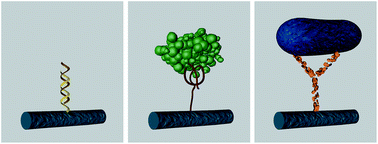Intrinsically conducting polymer nanowires for biosensing
Abstract
Nanomaterials are commonly exploited to increase the sensitivity of sensors. Conductive polymers are emerging as promising sensing materials as they are easy to functionalize with the appropriate sensing probes, and also act as signal transducers. By constraining the material into one dimensional nanowires, extraordinary sensitivity is achieved. This review deals with the fabrication of these electrically conductive polymer nanowire (ECPNW) sensors and their use for detecting nucleic acid sequences, proteins and pathogens.

- This article is part of the themed collection: 2014 Journal of Materials Chemistry B Hot Articles

 Please wait while we load your content...
Please wait while we load your content...